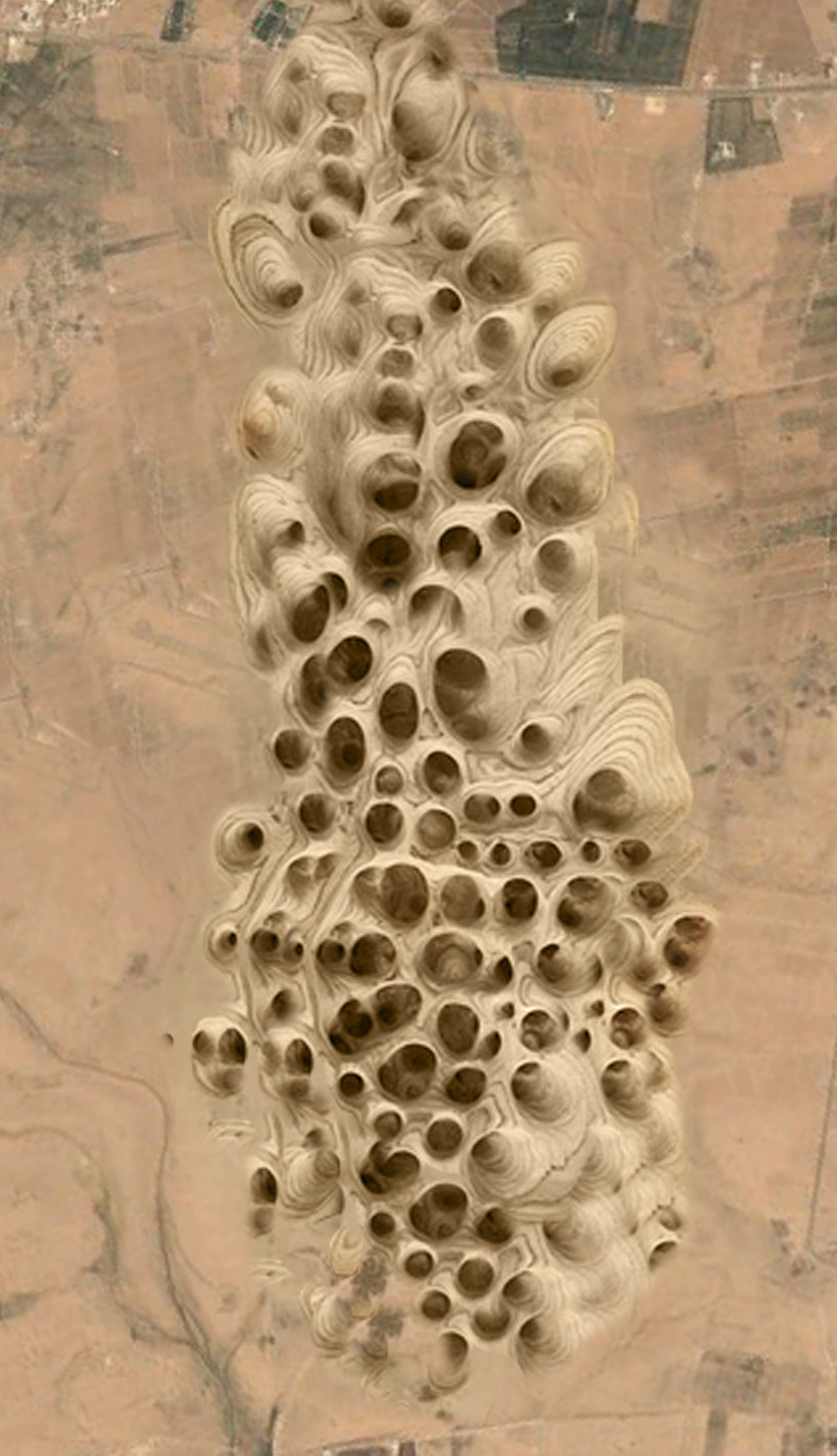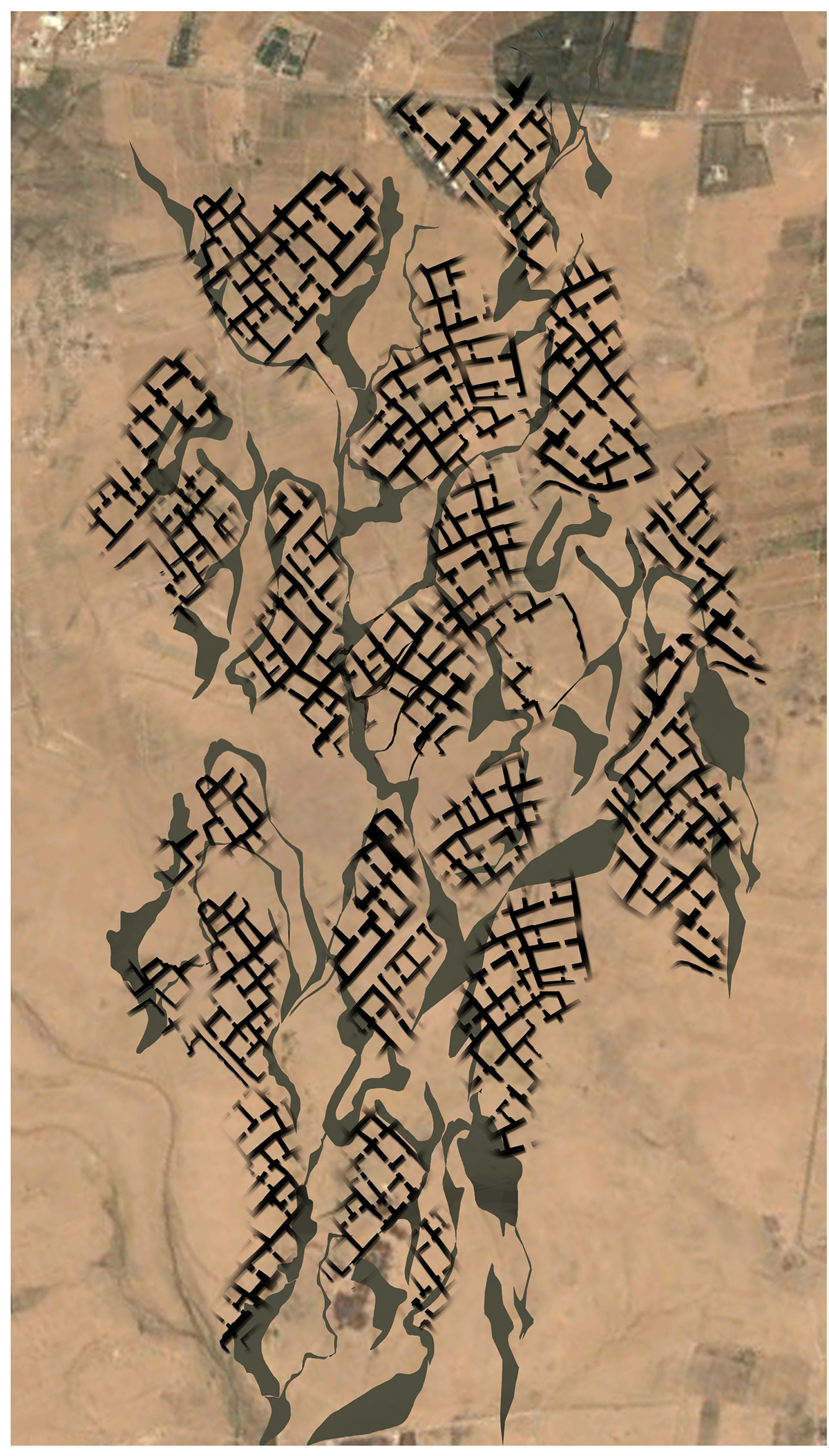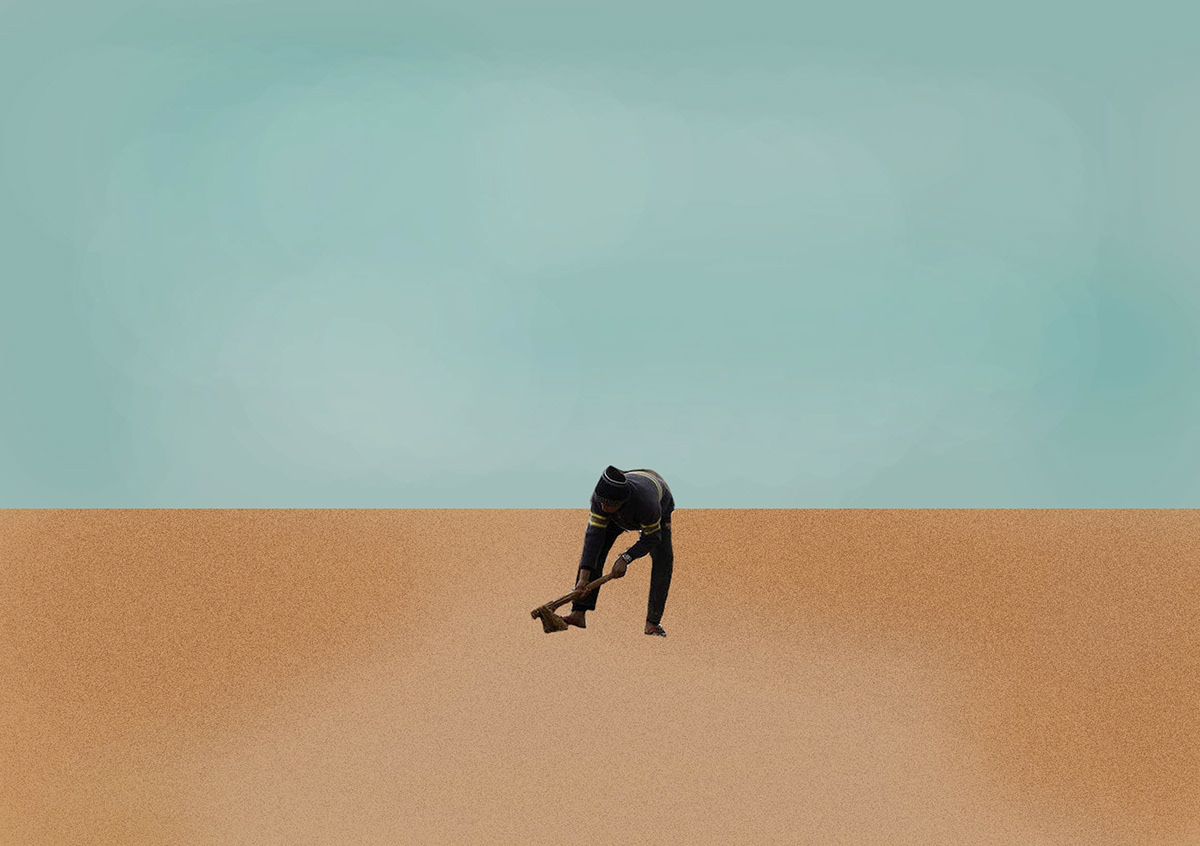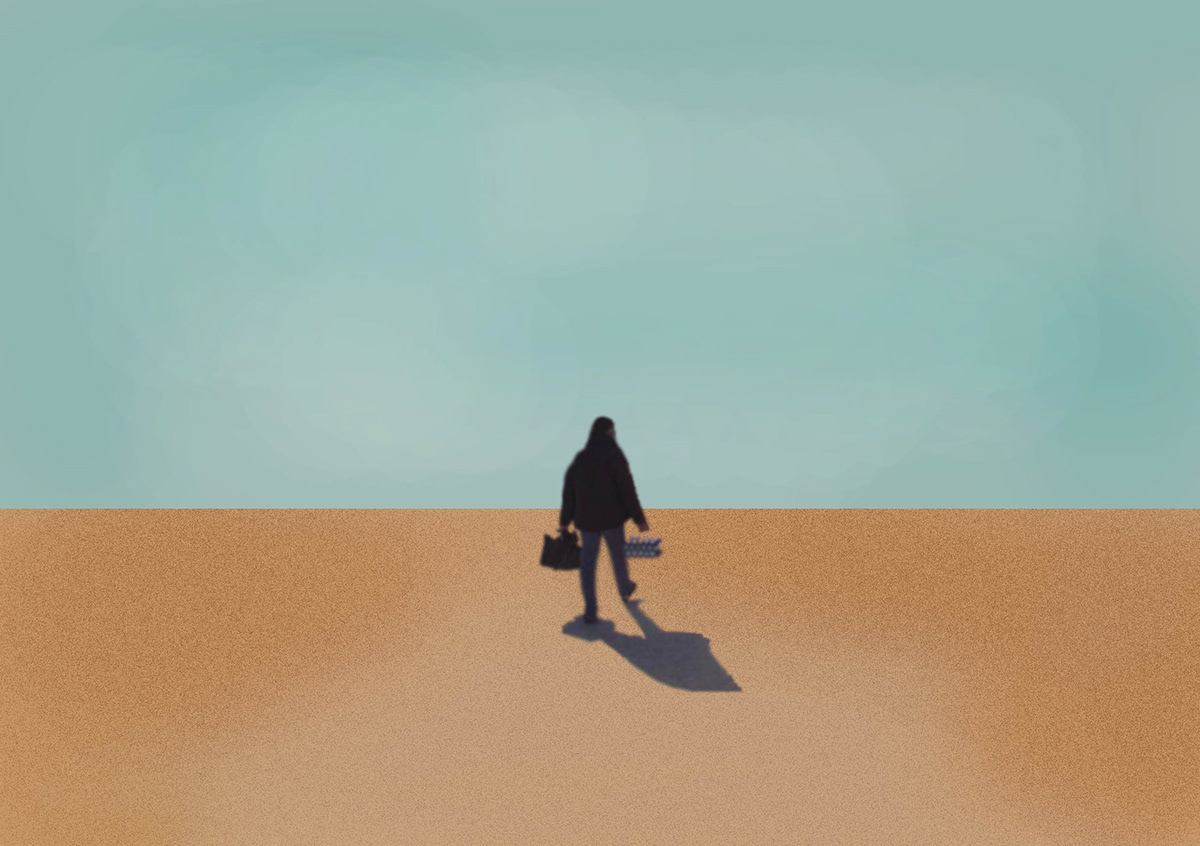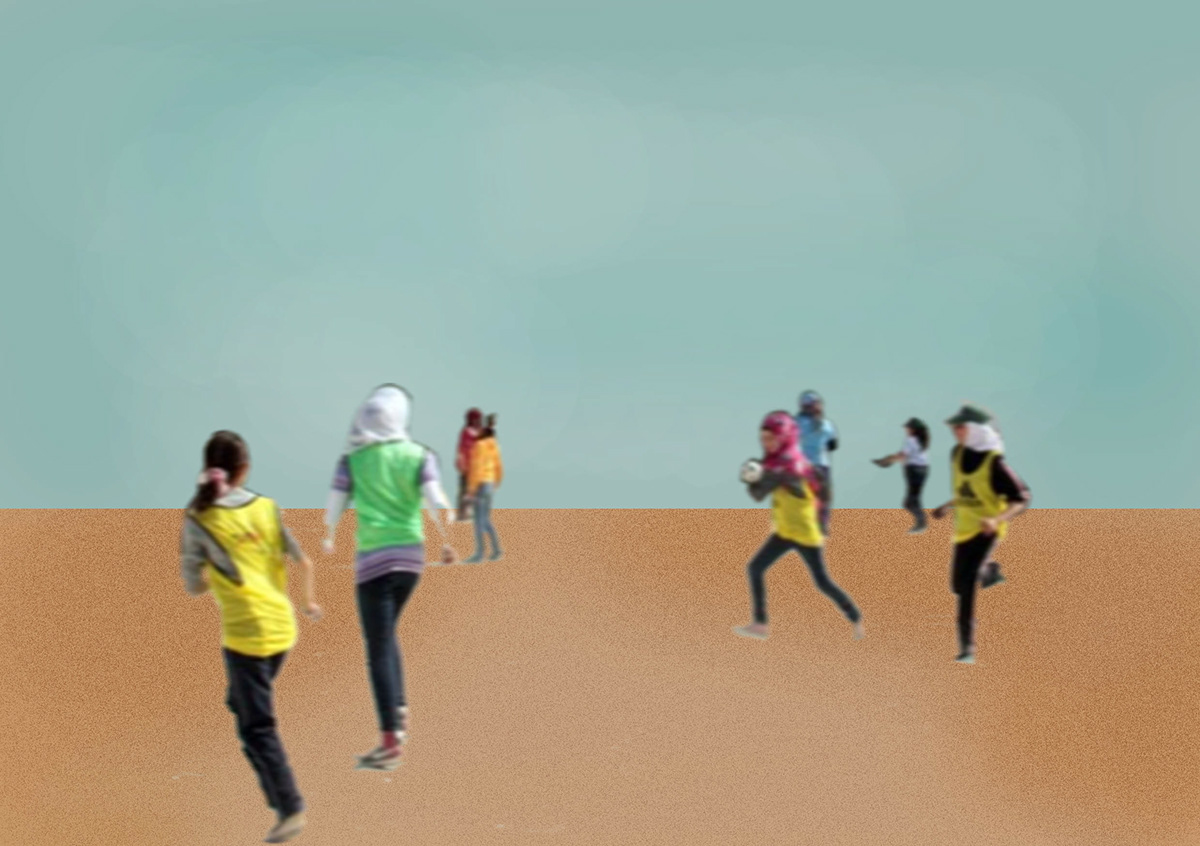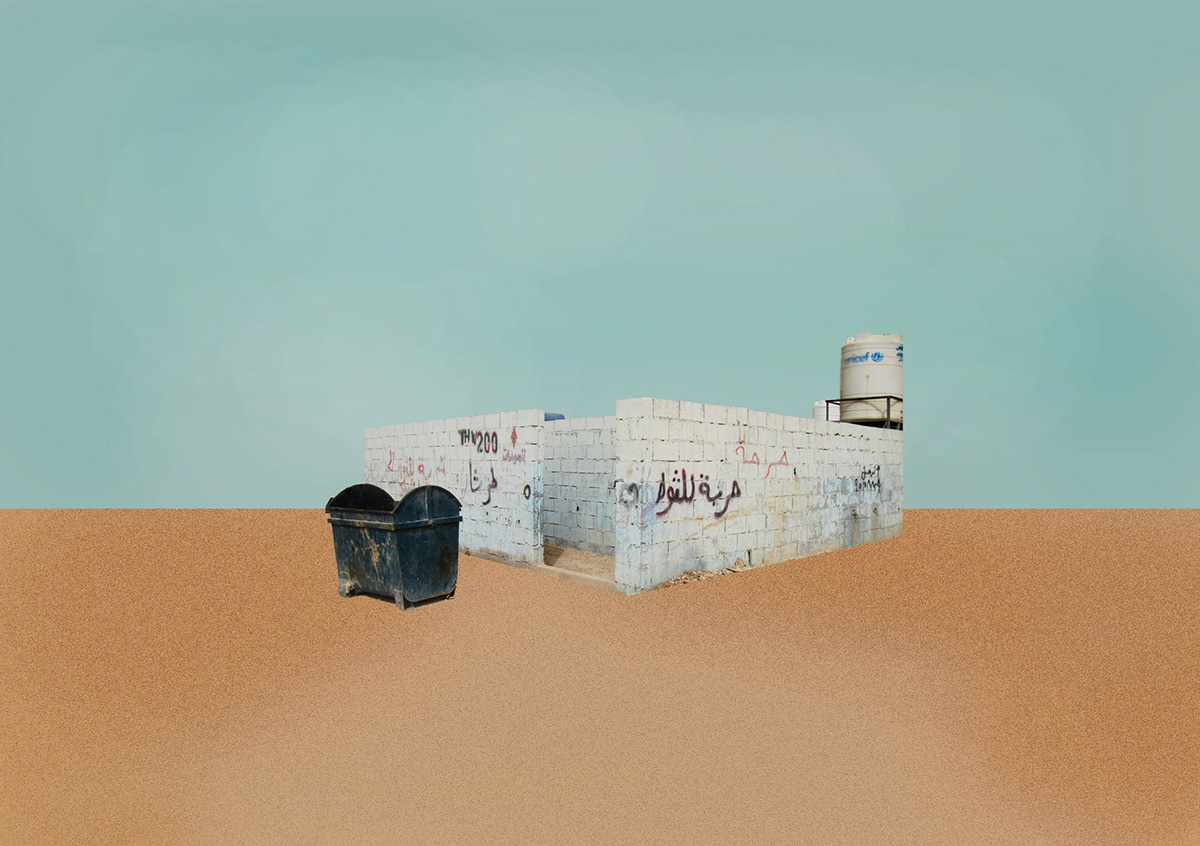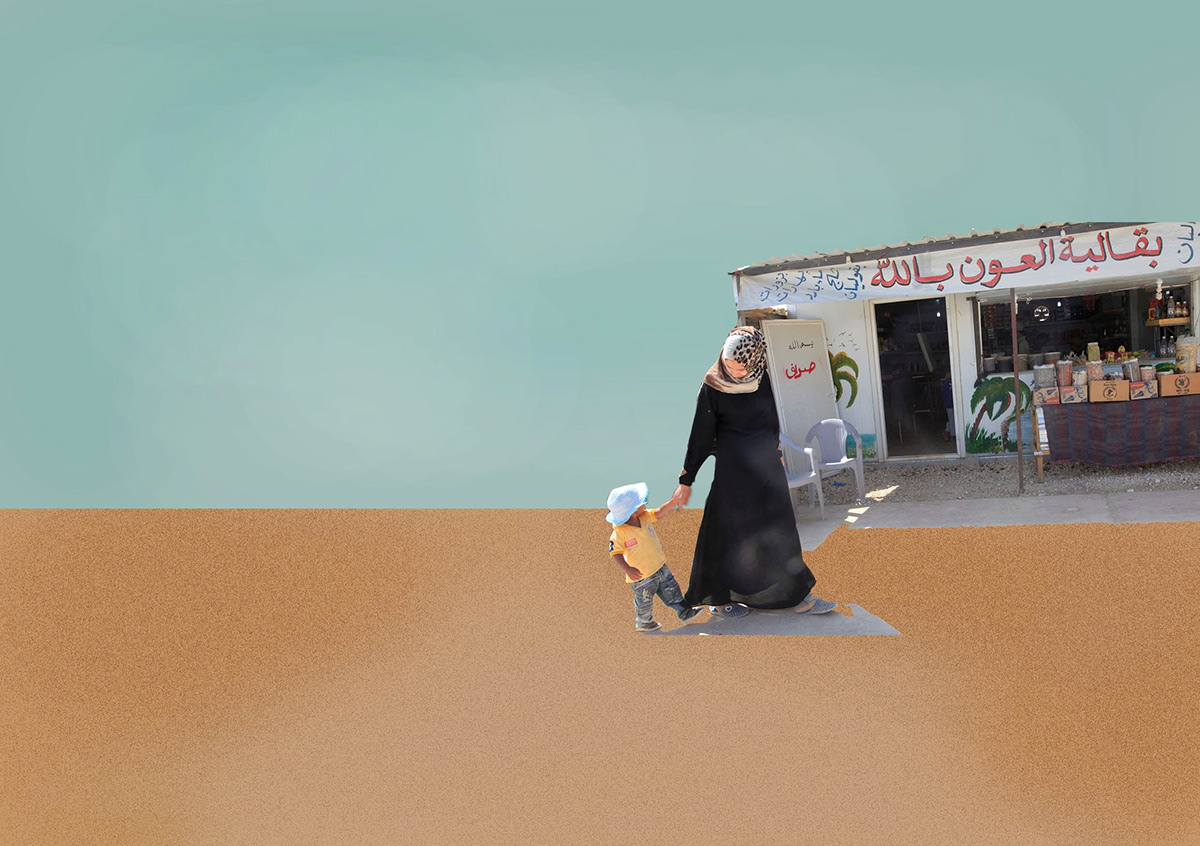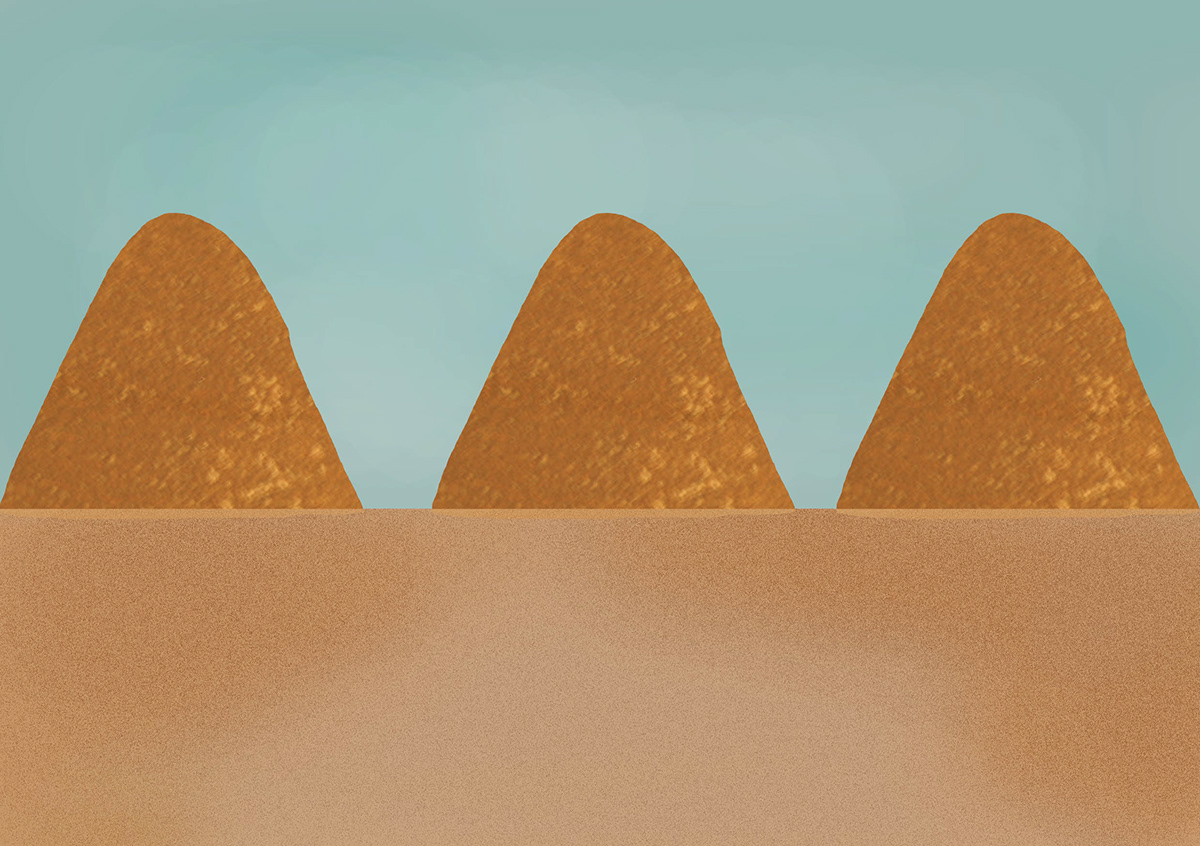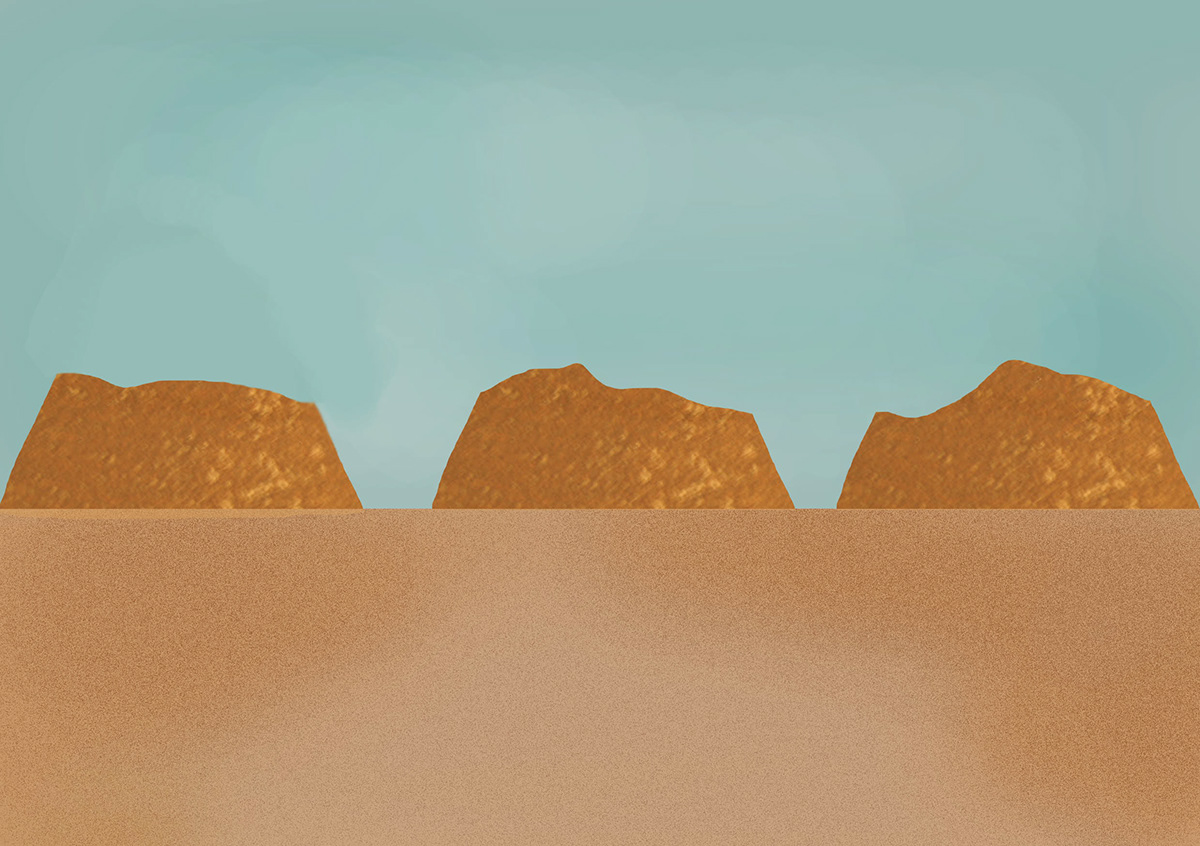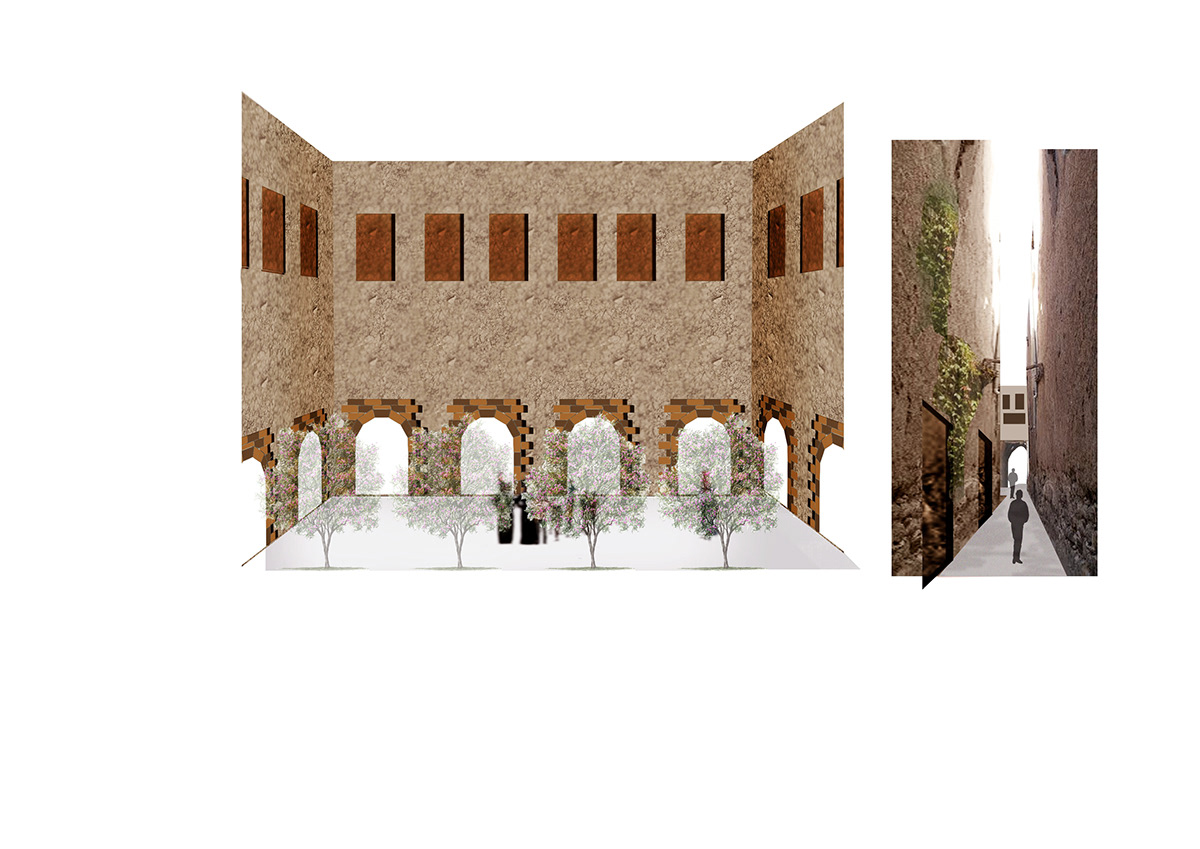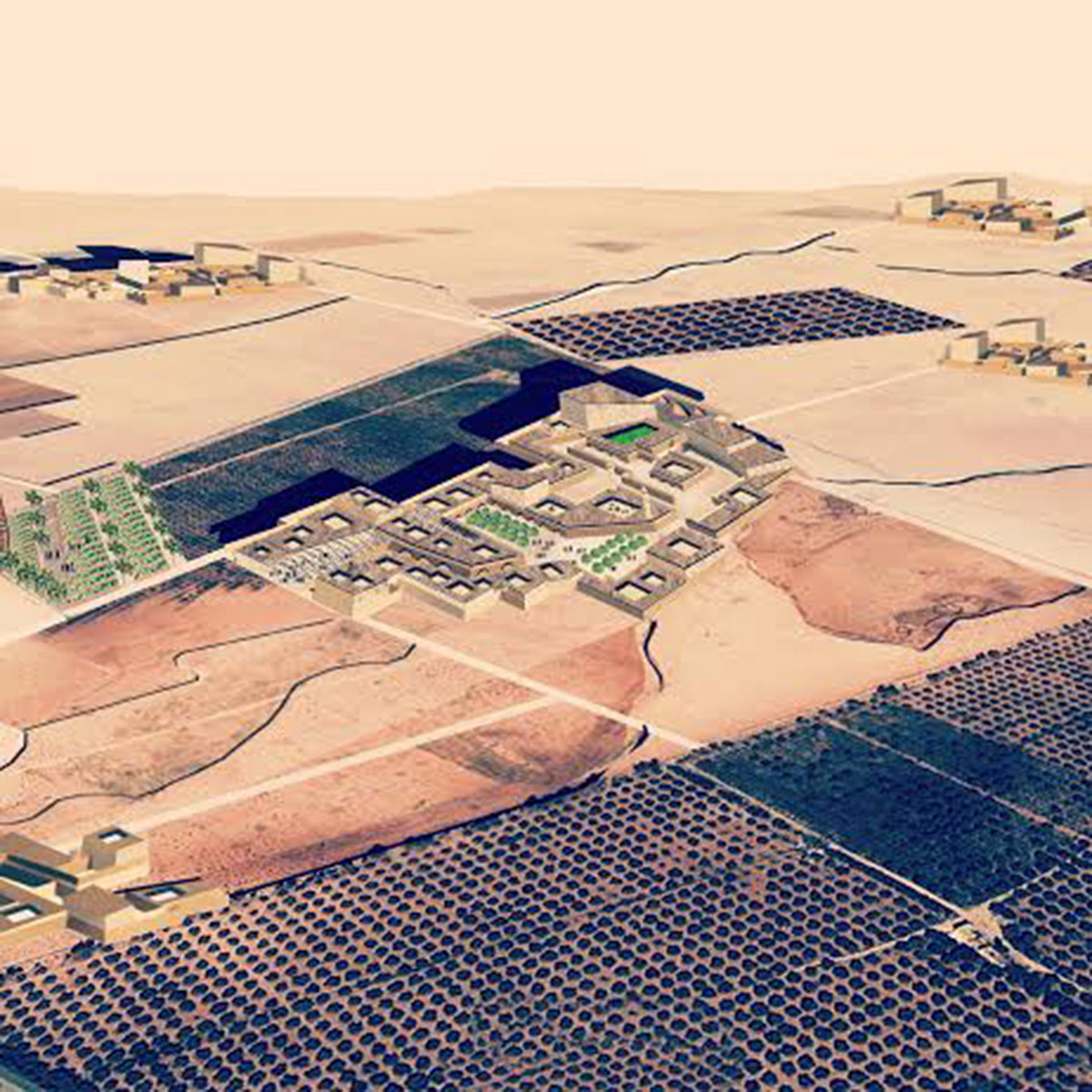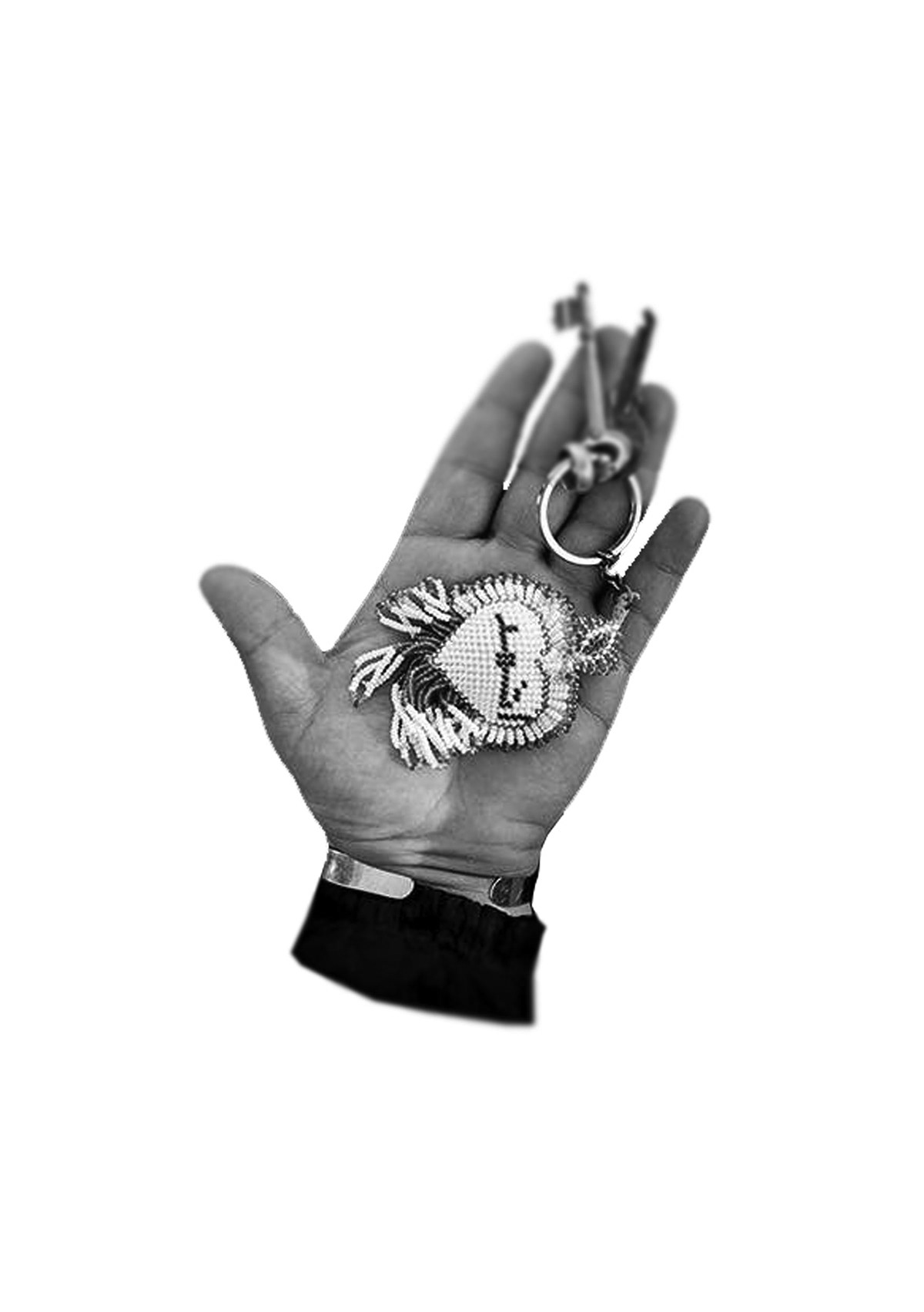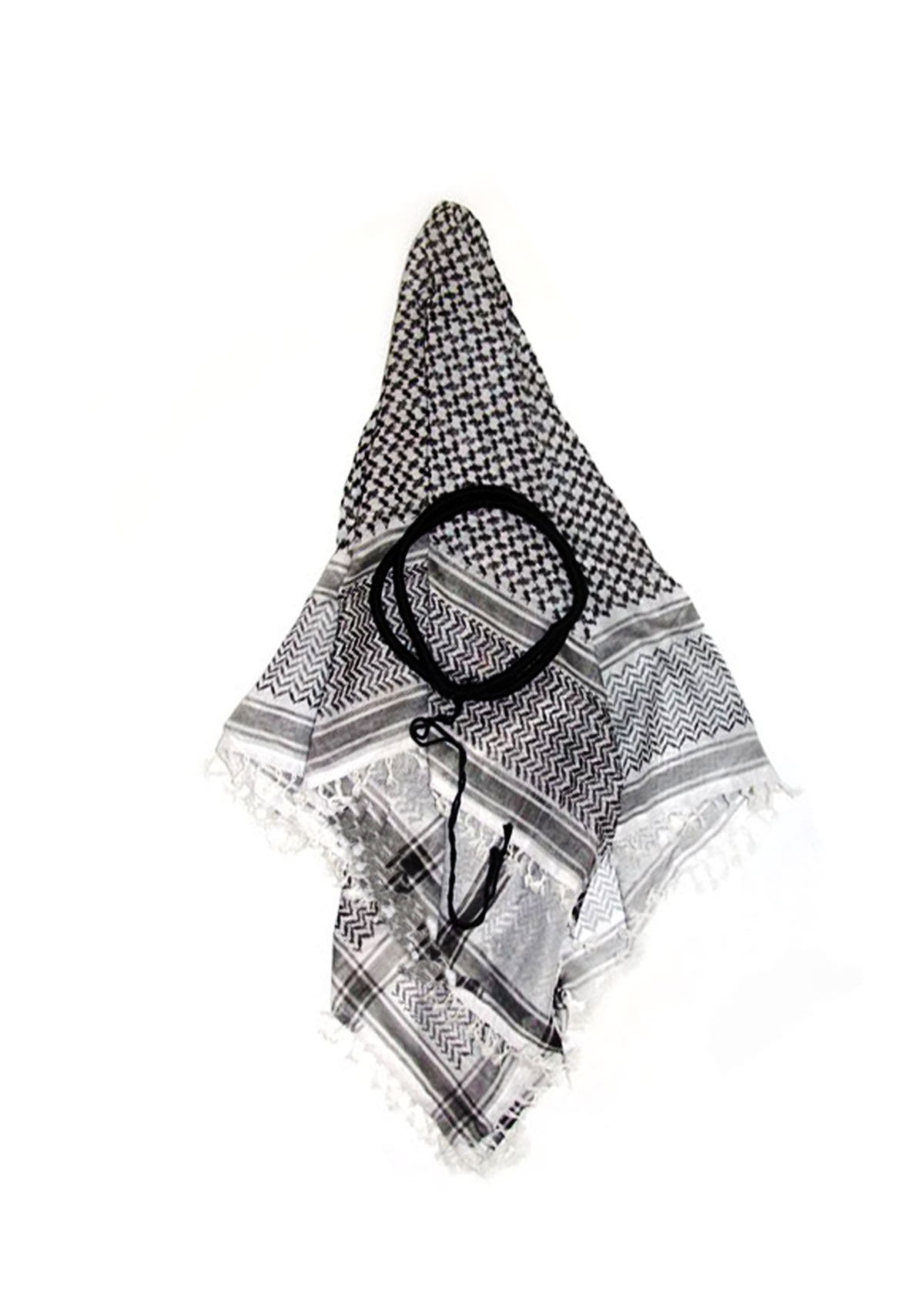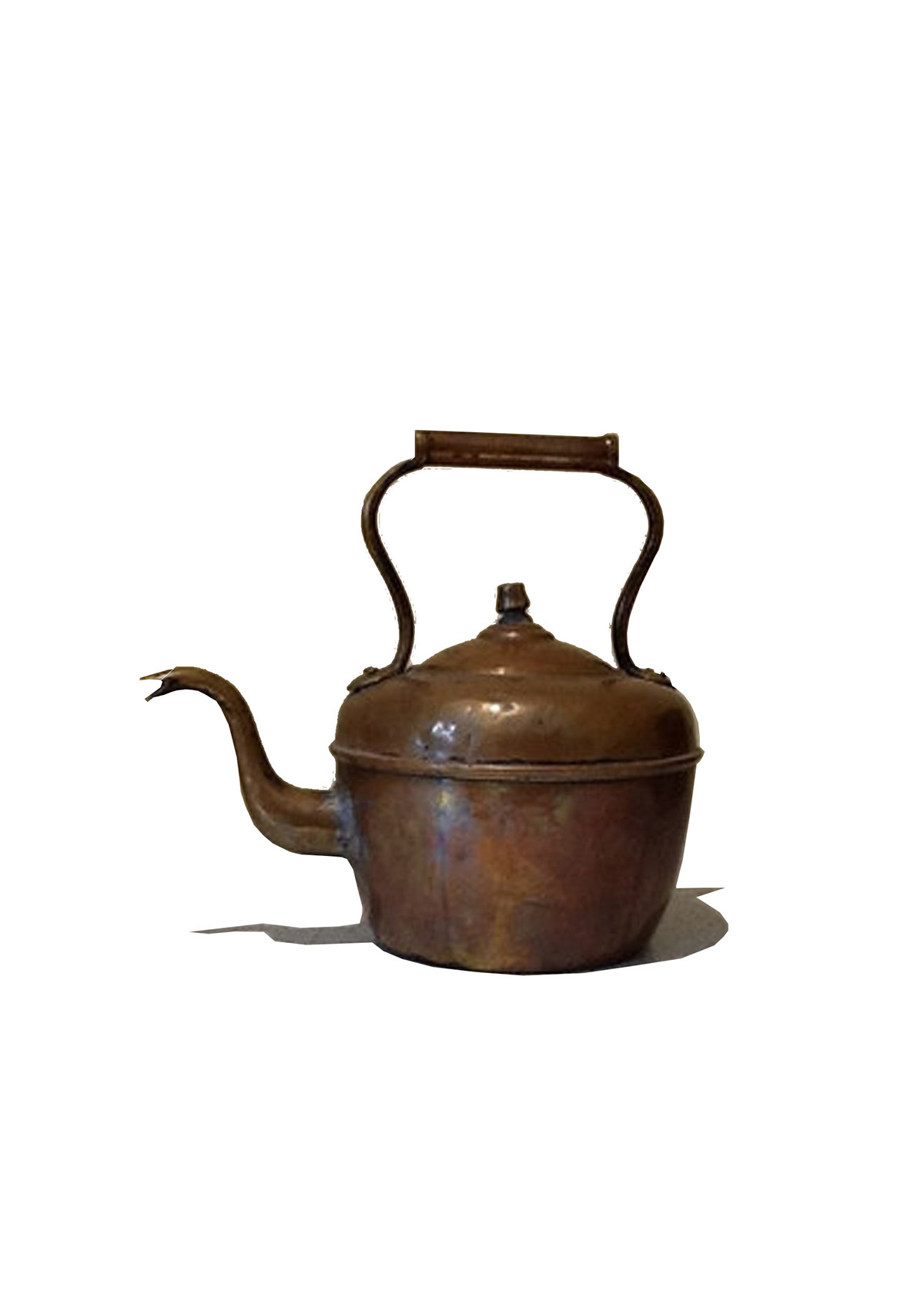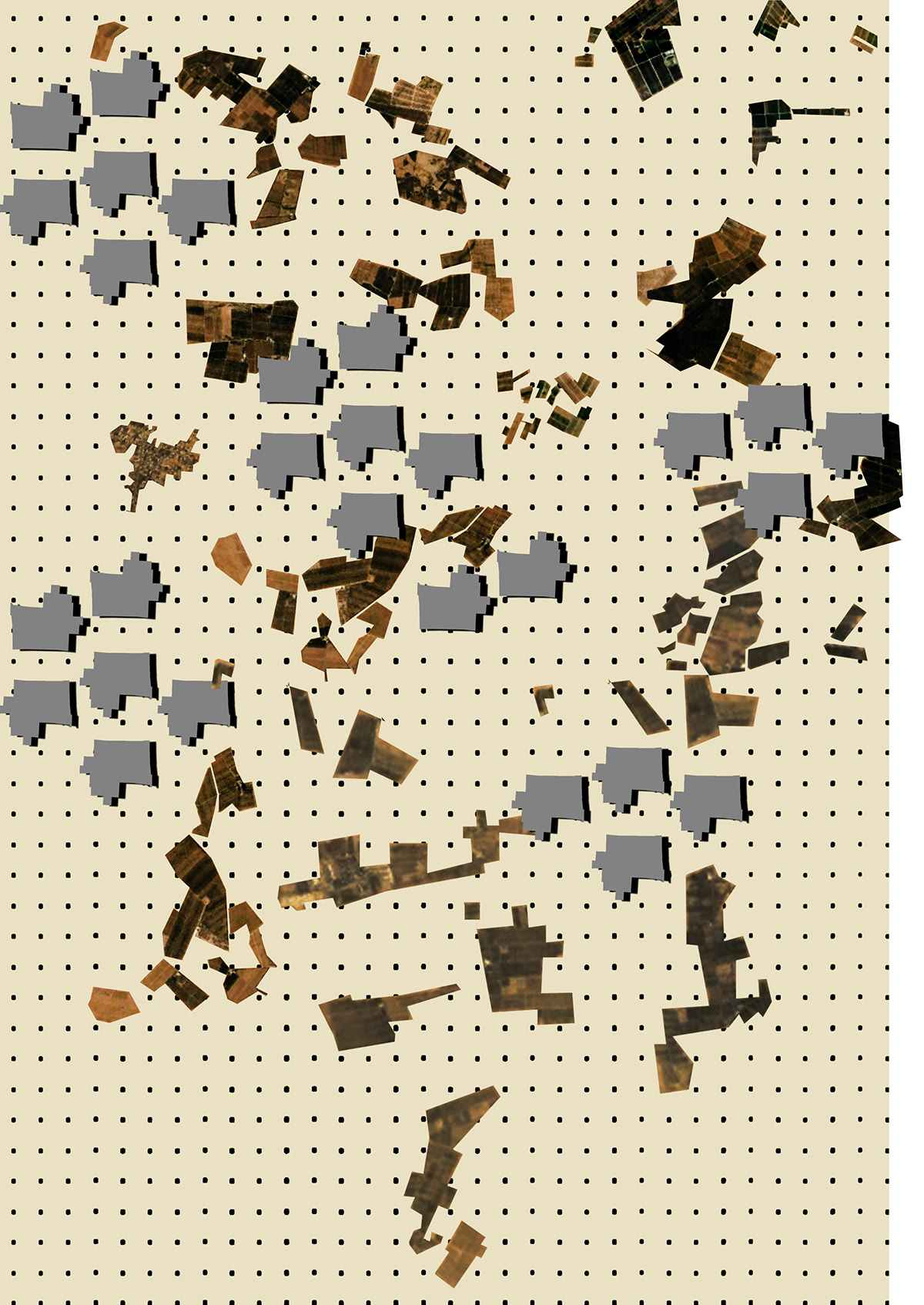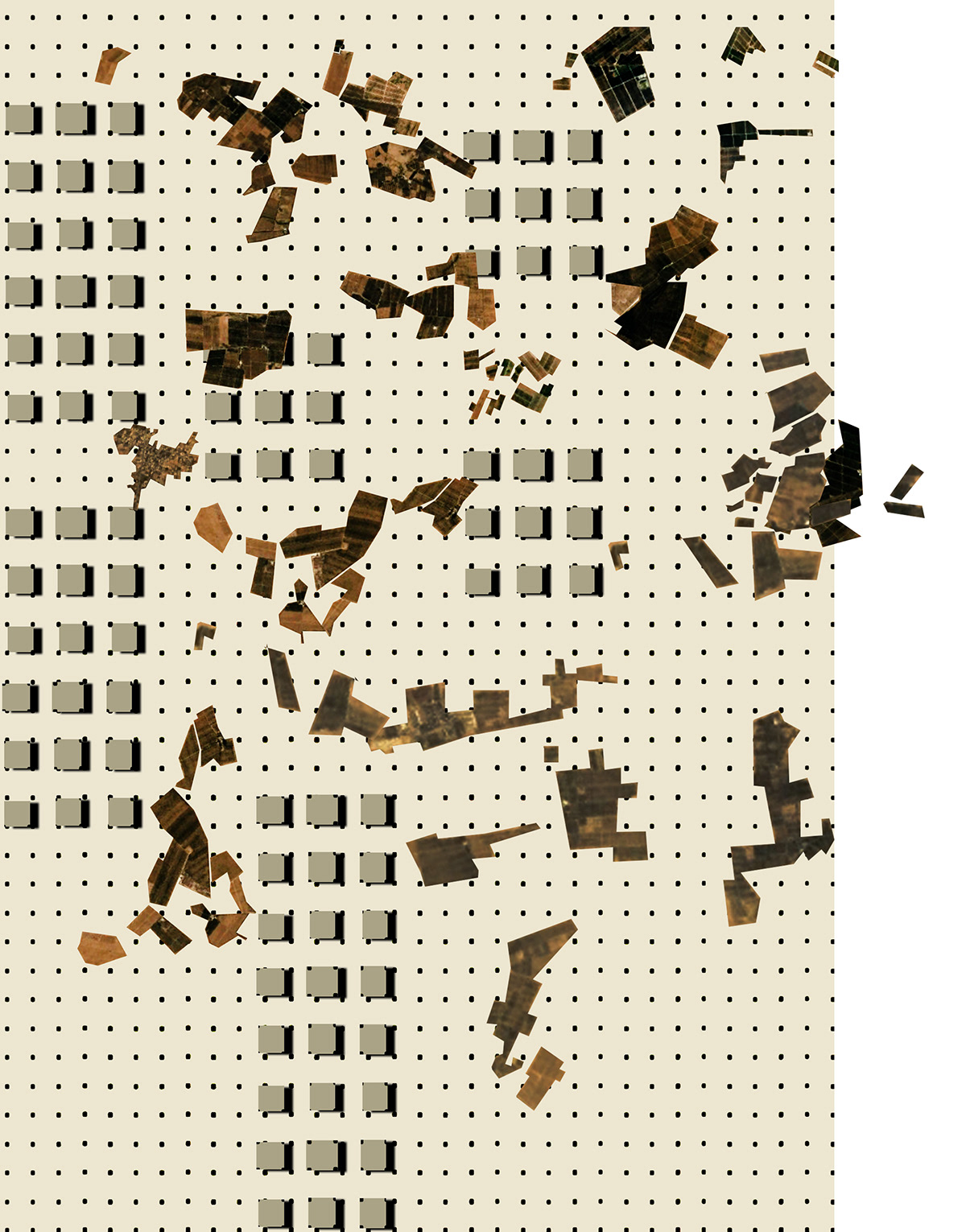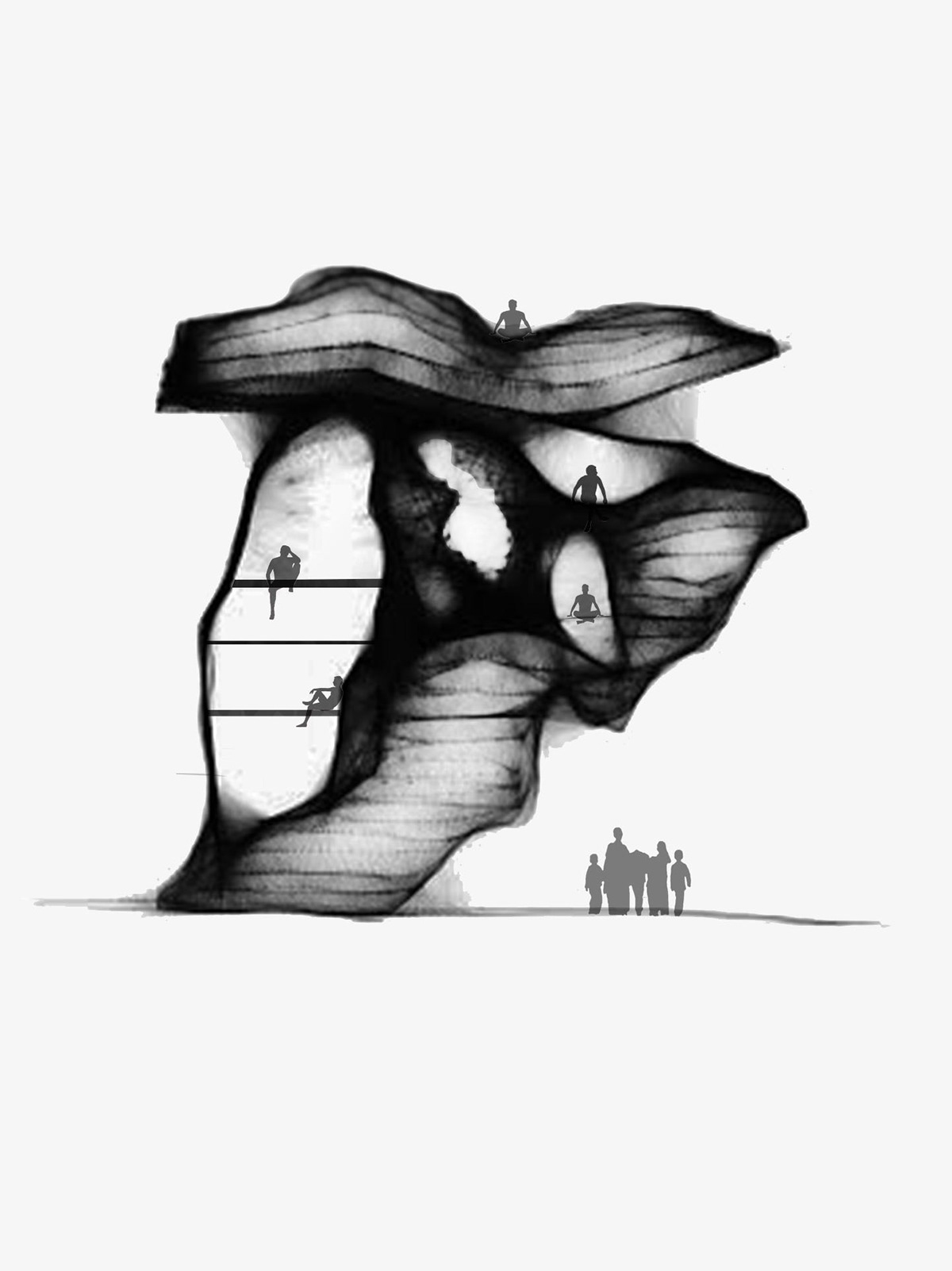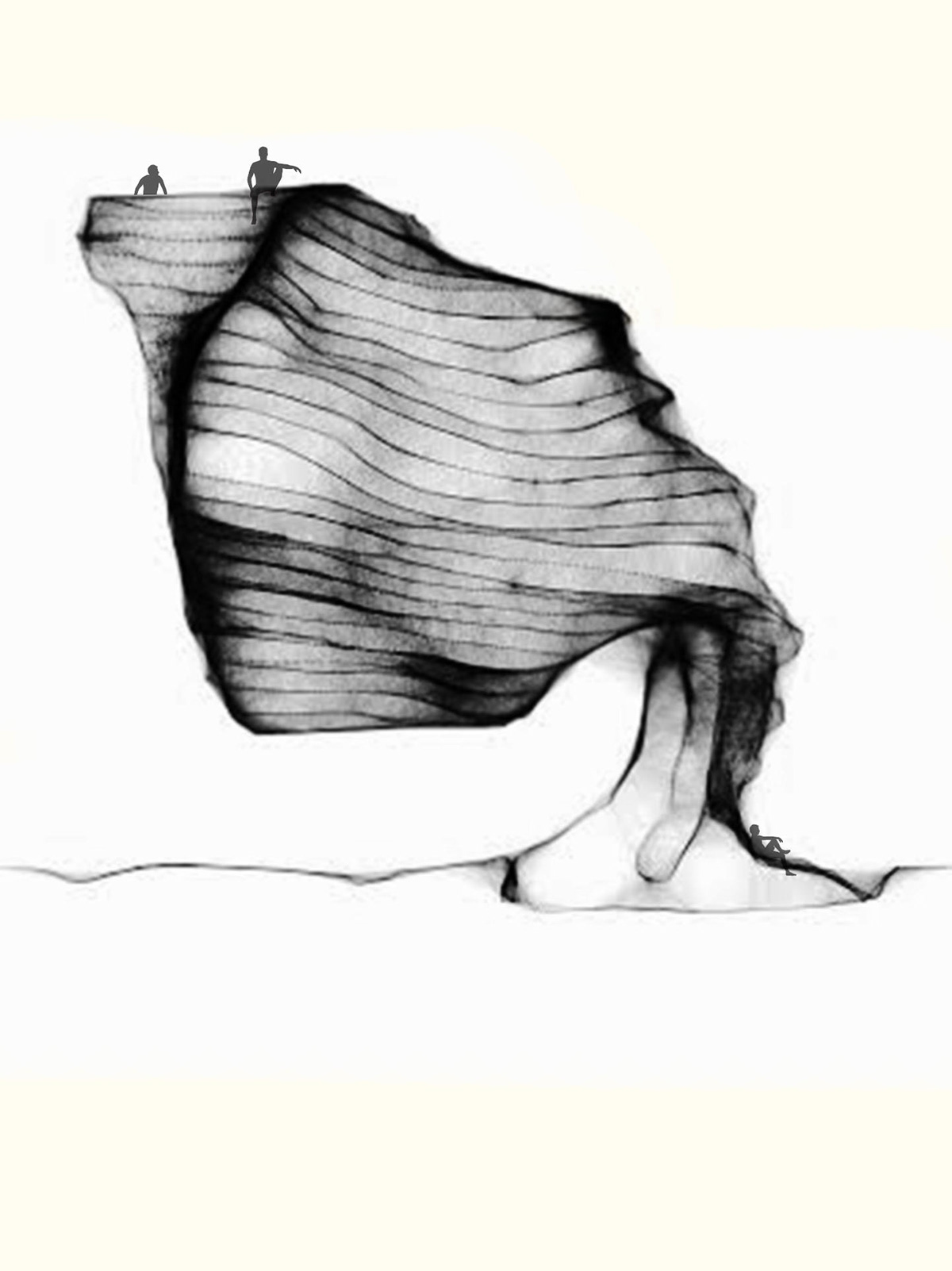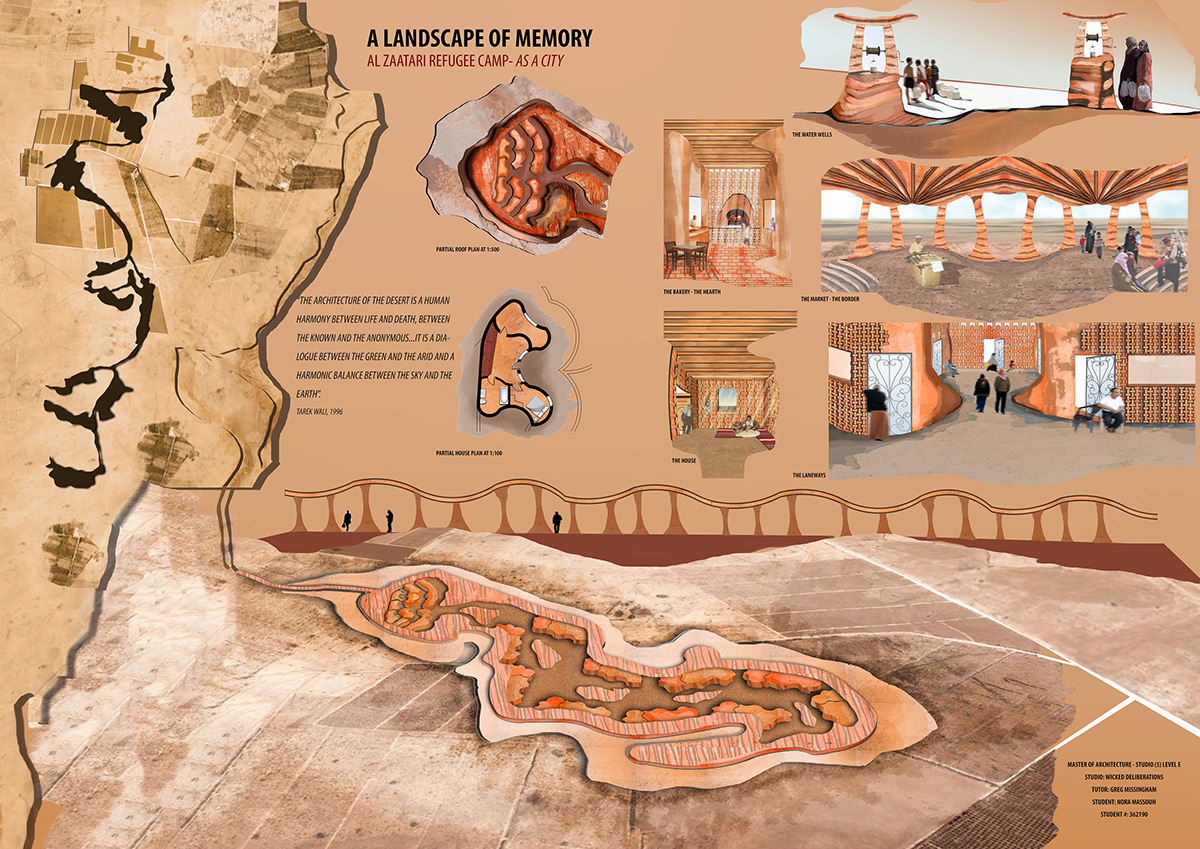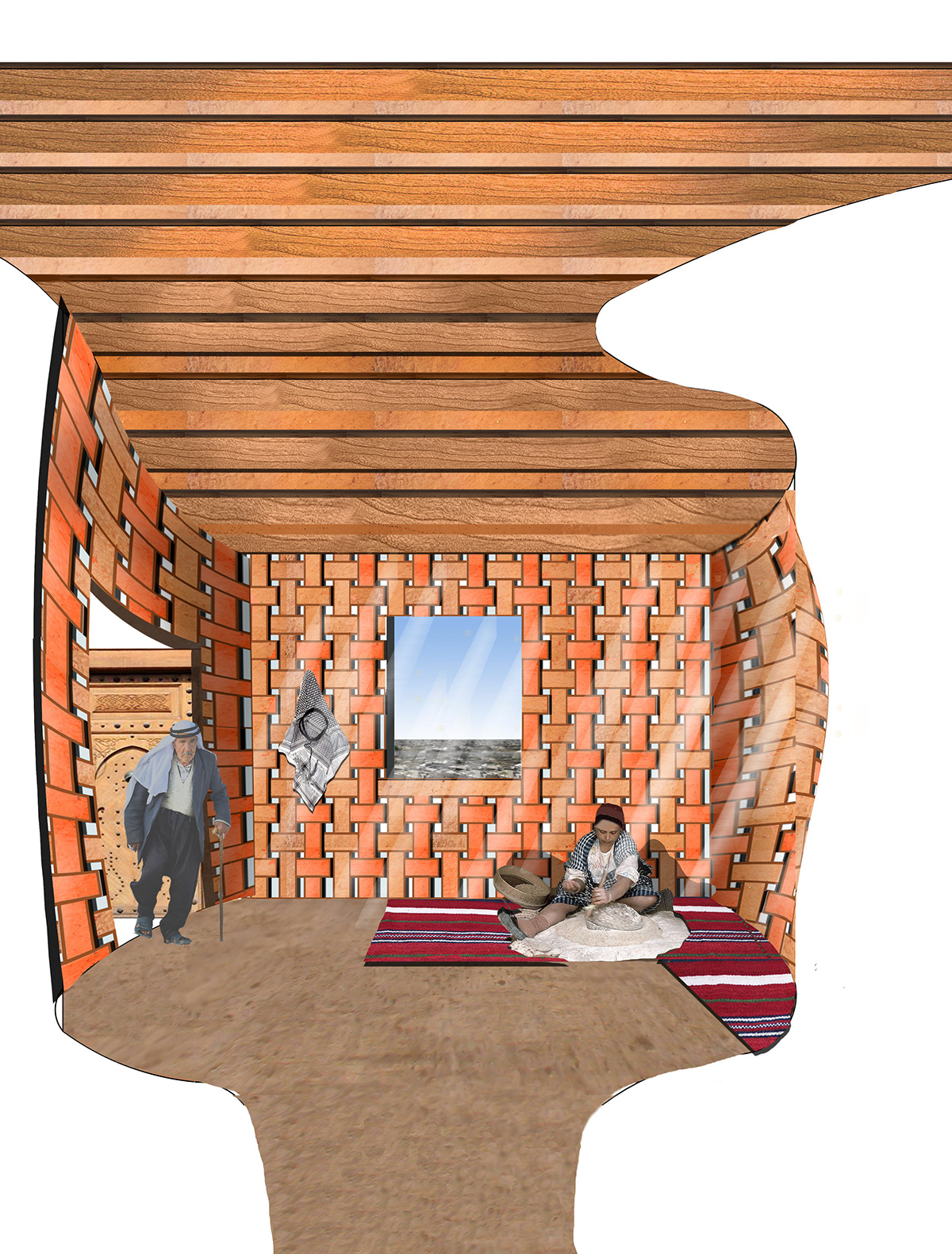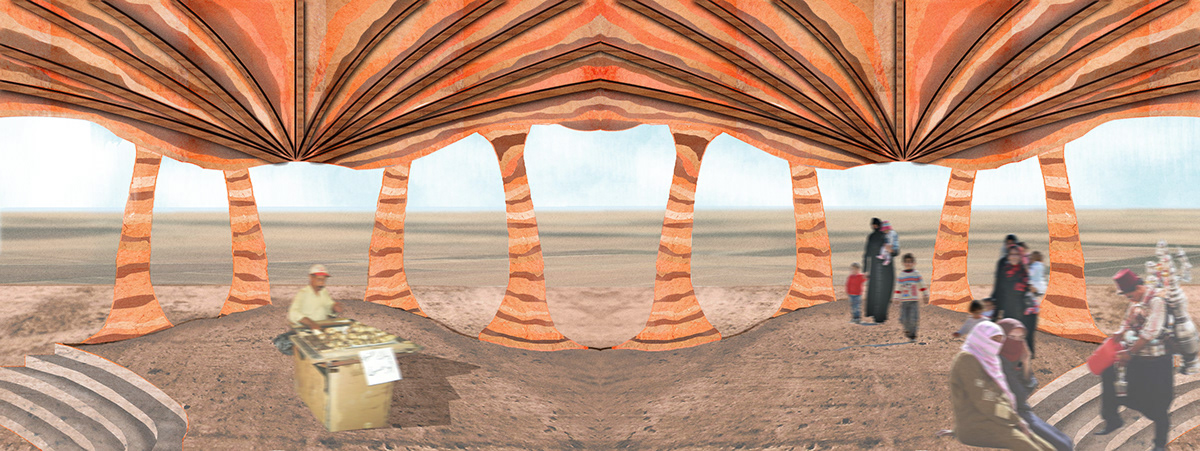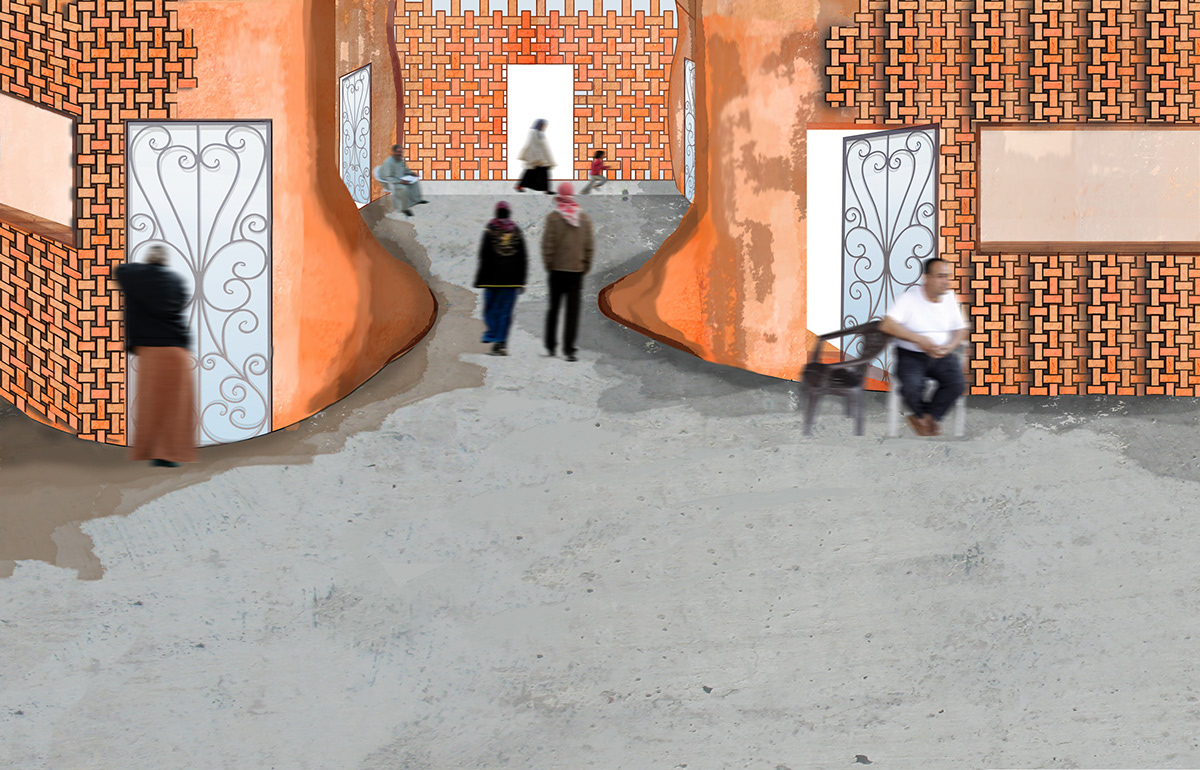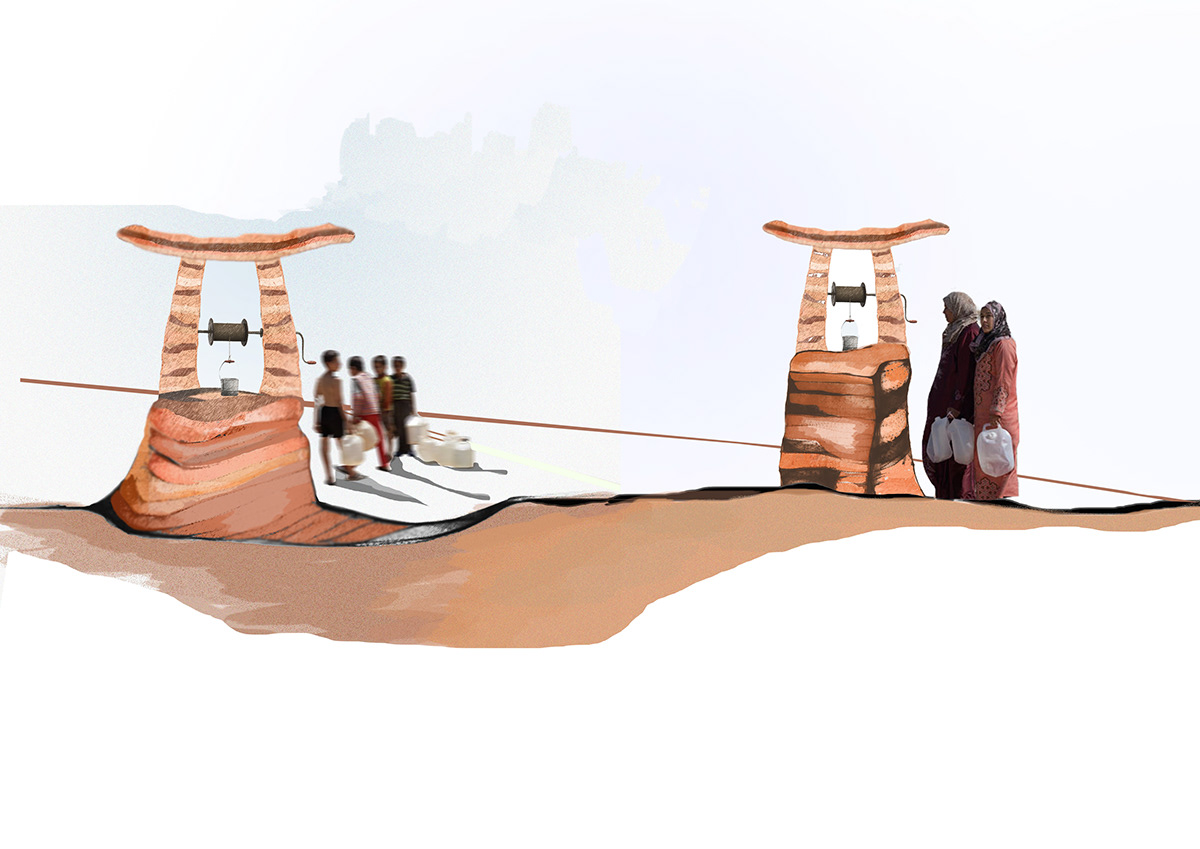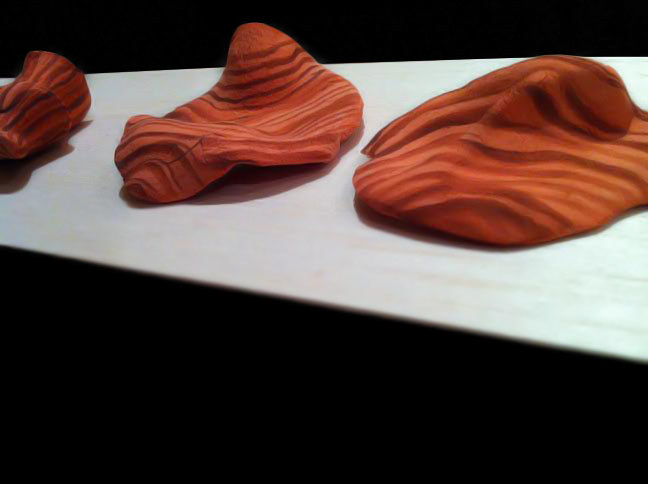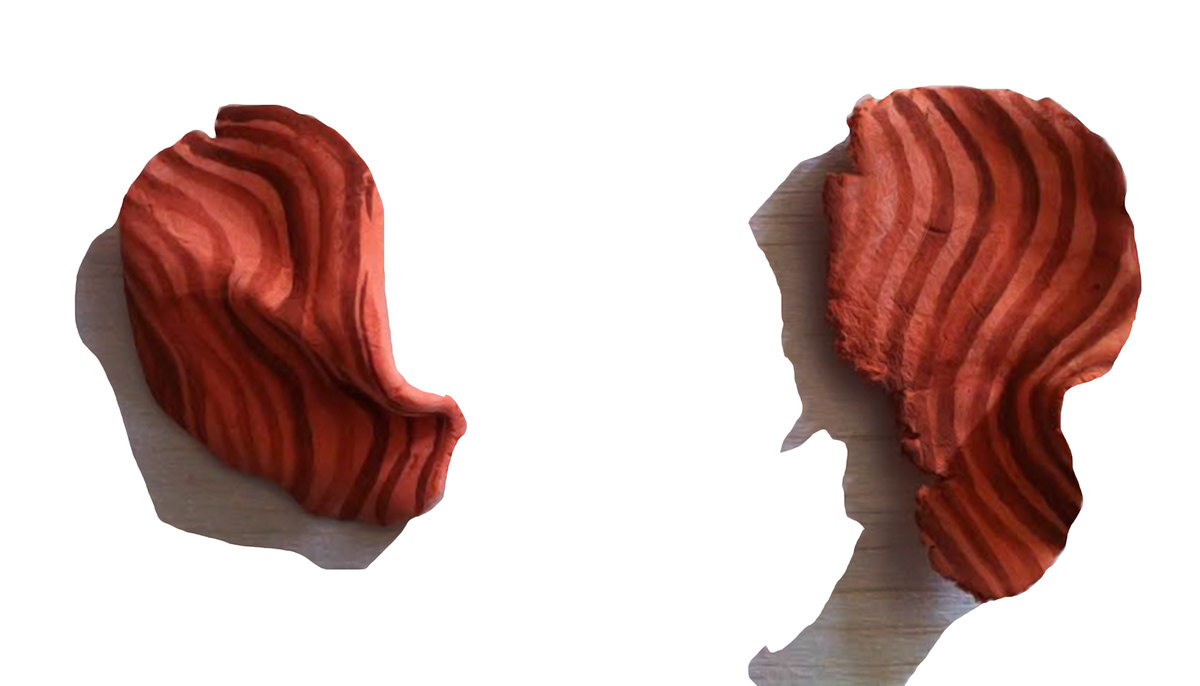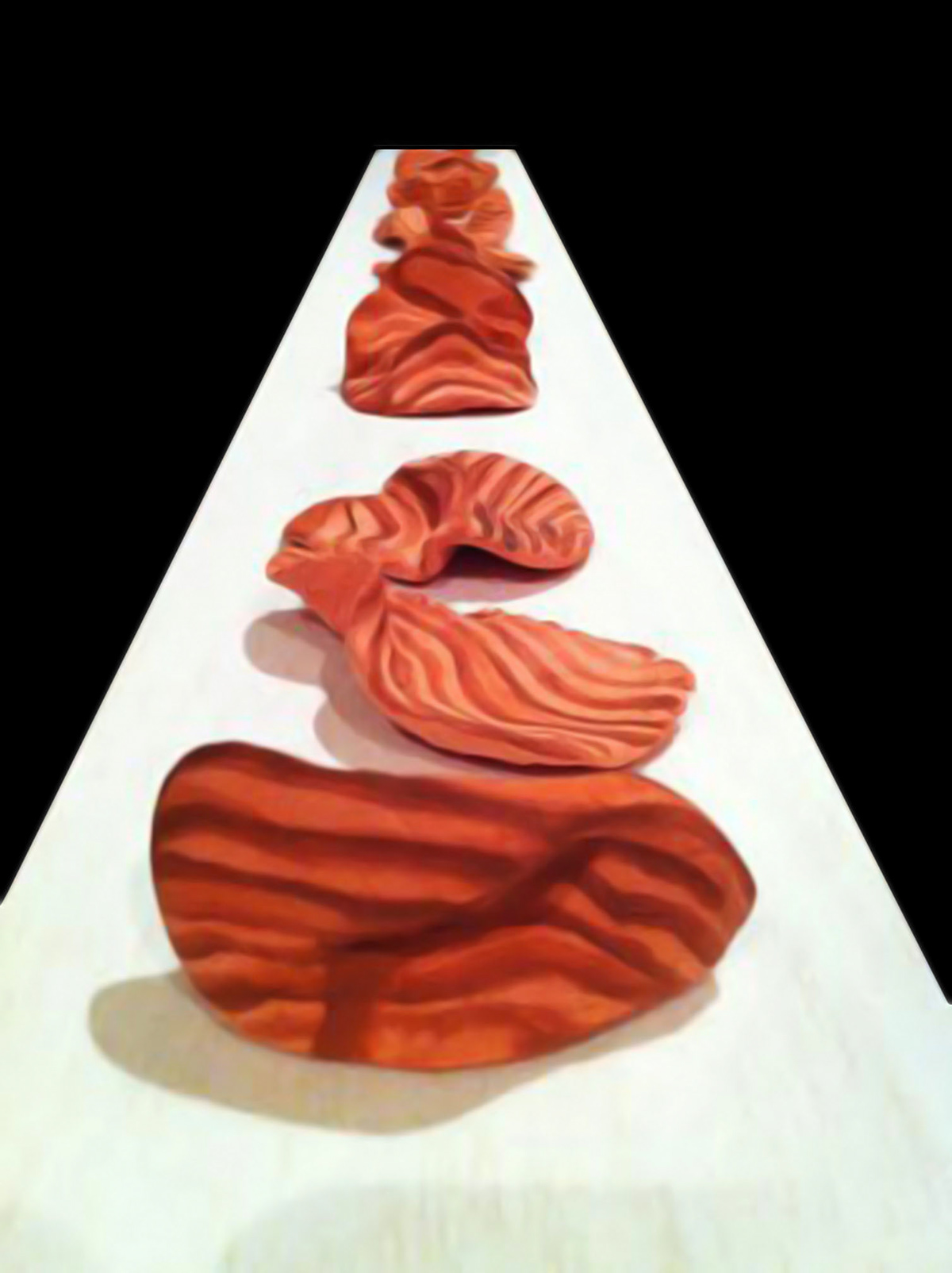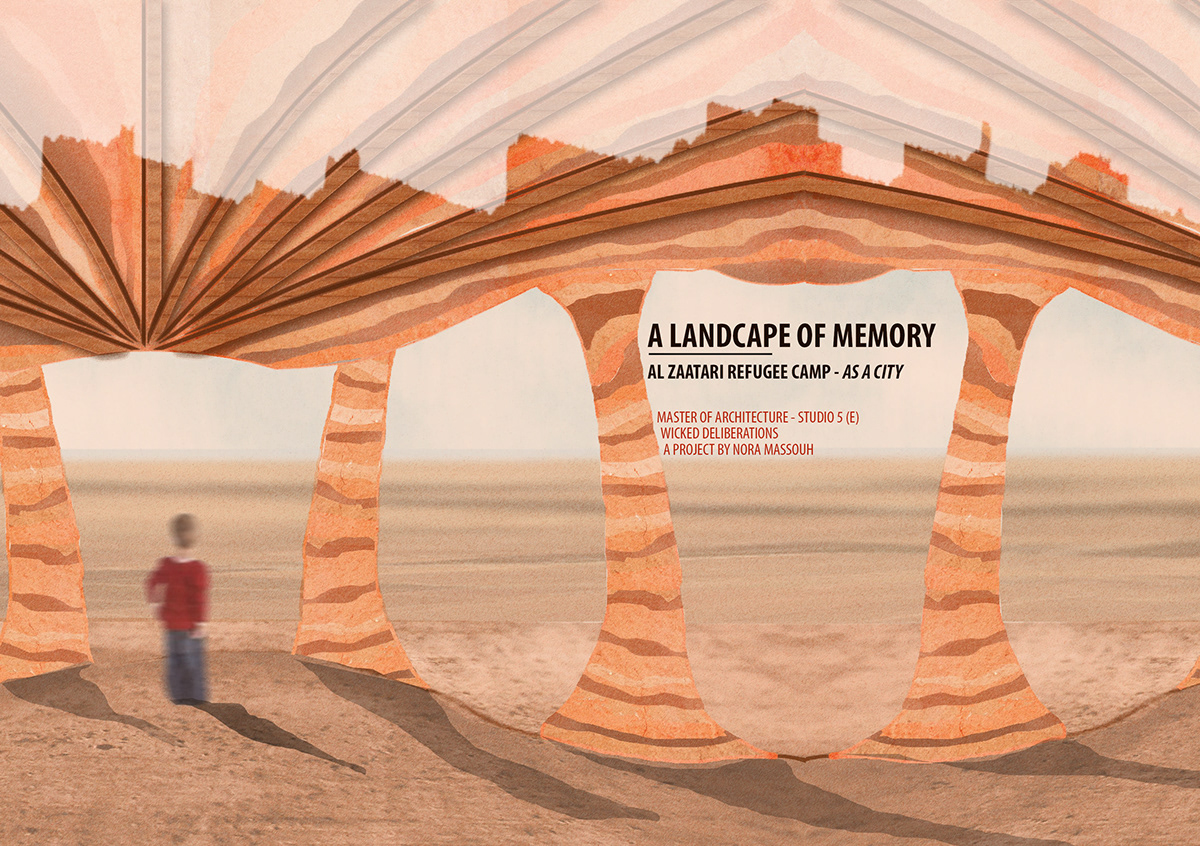
- It has been three and half years since the deadly conflict in Syria; it resulted in the deaths of over 200,000 Syrians, 88.7% of destruction and around 9 million refugees. Described as the worst humanitarian disaster of our times and the greatest refugee crisis since World War Two, millions of Syrians have been displaced and poured into neighbouring countries to live in makeshift camps under extremely harsh conditions. Al Zaatari Camp is such a place; it is a ‘wicked’ problem. The first stage of this project was to conduct an investigative site analysis of Al Zaatari and ask myself the following questions:
- How well or to what degree is this camp prepared for human habitation? If at all
- What are the factors that shaped this place into a landscape of fear and dystopia?
- The majorities of Syrians would agree that the western idea of the term ‘privacy’ is not really experienced in Syrian public spaces, laneways and streets. However many Syrian women in Zaatari are complaining about the lack of privacy and independence because of how the camp is shaped. How does design shape privacy yet share the ideal Syrian public encounters?
- The three different approaches:
“ pursuing research into the Wicked Problem as a professional designer might, using three different approaches: 1 is your usual way of pursuing design, 2 derived from / suggested by the Wicked Problem, and 3 an approach at right angles to those first two design approaches.
The first two approaches of which I first thought of were A) imagining the Syrian city as an ideal model for the re-imagined refugee communities in Zaatari and B) using the agricultural landscape near the camp. Both of these approaches, found in Weeks 6 and 7, were more static and permanent than malleable or variant and so I rejected pursuing them further.
“ pursuing research into the Wicked Problem as a professional designer might, using three different approaches: 1 is your usual way of pursuing design, 2 derived from / suggested by the Wicked Problem, and 3 an approach at right angles to those first two design approaches.
The first two approaches of which I first thought of were A) imagining the Syrian city as an ideal model for the re-imagined refugee communities in Zaatari and B) using the agricultural landscape near the camp. Both of these approaches, found in Weeks 6 and 7, were more static and permanent than malleable or variant and so I rejected pursuing them further.
- Re-imagining the idea of the Shelter:
- Rather than forcing Western technology onto the refugees in the form of cement rectangular dwellings, hot in summer/cold in winter with unsustainable sources for heat and cooling, reviving the earth vernacular through shelter design becomes ideal to this landscape. Mud-brick or rammed earth homes have worked in many Middle-eastern cultures for many centuries sustainably and economically. They relate to the landscape in which they sit, to the people and to history.
- Reshaping the landscape (The chosen third approach)
- A landscape isn’t merely a product of culture; it is a verb, a catalyst and an agent. It produces and enriches culture.


